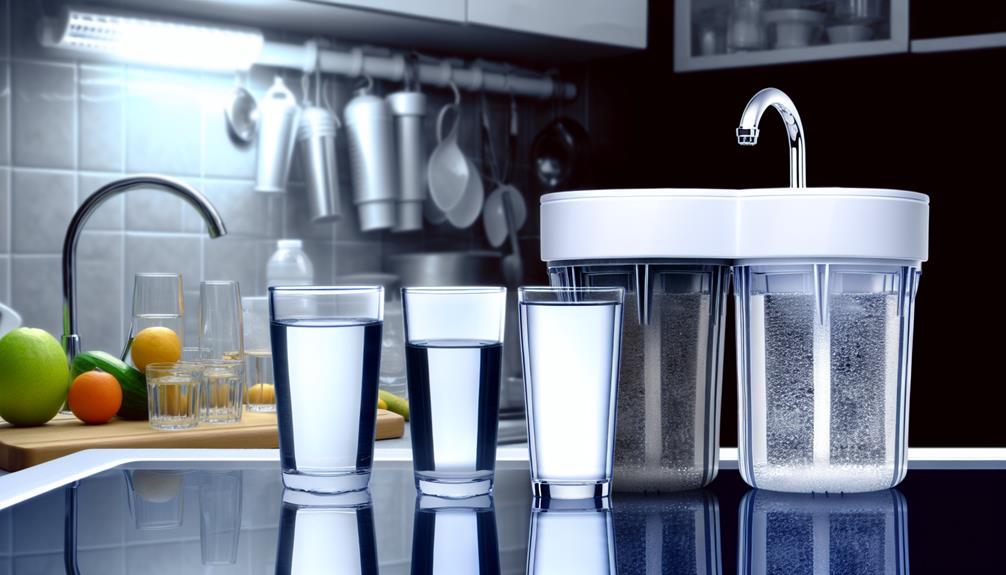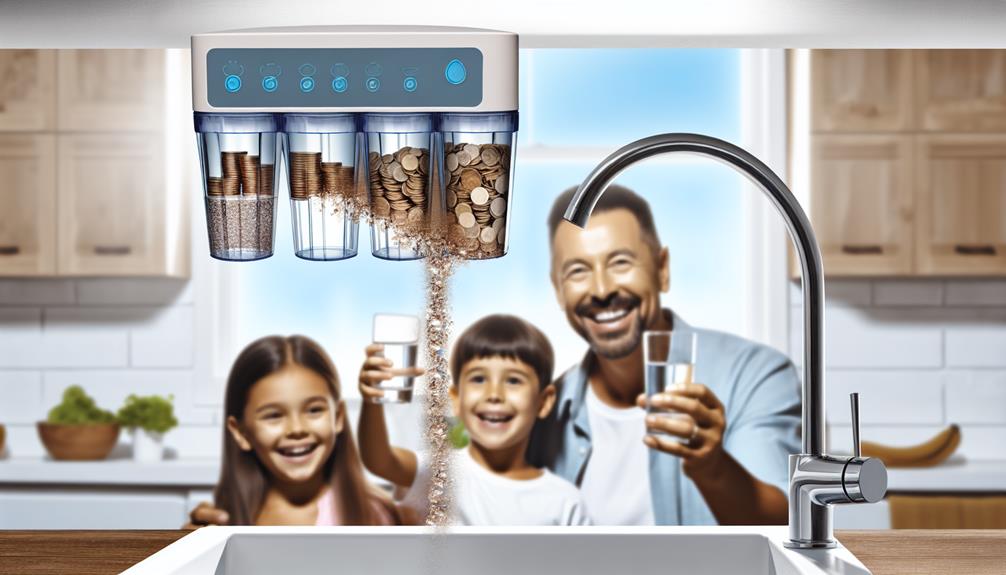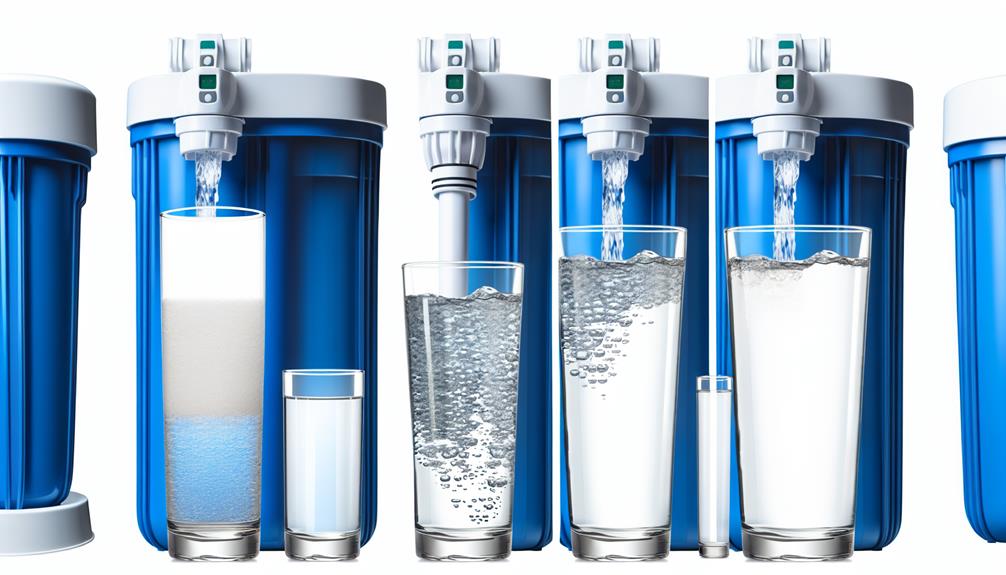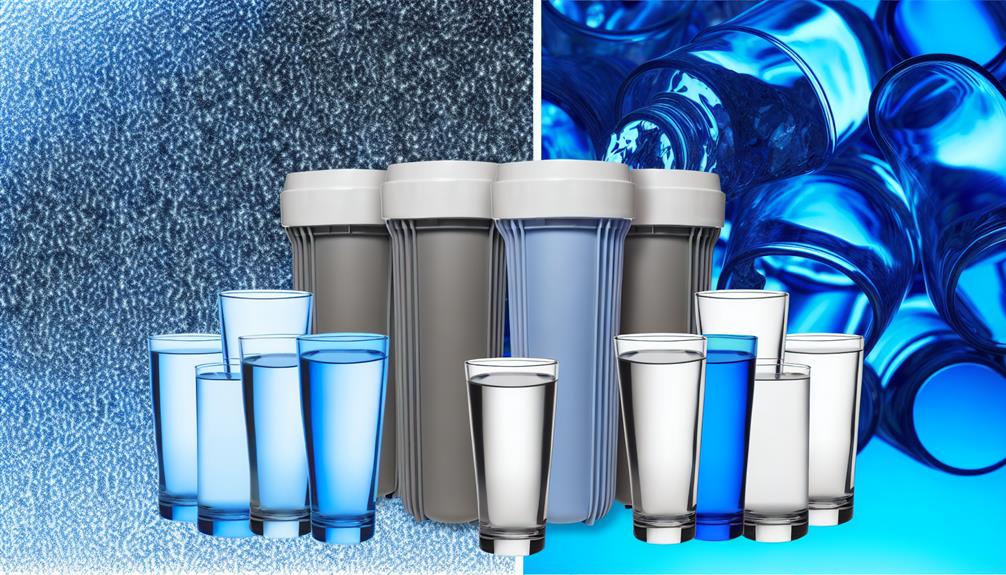When you grab a glass from your cabinet and fill it with tap water, you're likely not thinking about the contaminants that could be lurking in your local water supply. You want a convenient and efficient way to ensure the water you're drinking is clean and safe.
That's where an under-sink water filtration system comes in. Designed to be out of sight, these systems provide you with a continuous supply of purified water directly from your tap, without the clutter of countertop models.
What you might not yet realize is how these systems can also serve as a long-term investment in your health and home. As you consider the myriad of filtration options available, it's worth exploring why an under-sink water filter could be the optimal choice for your needs, and just how it might outperform the alternatives you're considering.
Key Benefits of Under-Sink Filters

Under-sink water filtration systems offer you a convenient and effective solution to improve the quality of your drinking water directly from the tap. These systems are engineered to tackle a wide range of contaminants that can affect both the safety and the taste of your water.
By integrating advanced filtration technologies, under-sink filters not only reduce potentially harmful substances such as lead, chlorine, and microbial cysts but also enhance the overall taste of your water, resulting in a noticeable taste improvement.
When considering the technical benefits, filter longevity stands out as a significant advantage. Under-sink filters are designed to process thousands of gallons of water before requiring a replacement. This long service life minimizes maintenance efforts and ensures a consistent supply of clean water. The system's capacity to handle a substantial volume of water without a loss in filtration efficiency is a testament to its robust design.
Moreover, under-sink systems are typically equipped with indicators or monitoring systems that alert you when it's time to change the filter. This feature ensures that you don't compromise on water quality due to a saturated filter.
Investing in an under-sink water filtration system means you're choosing a durable, reliable, and cost-effective approach to safeguard your drinking water.
Installation and Maintenance Insights
Having recognized the benefits of under-sink water filtration systems, it's crucial to understand the installation process and maintenance requirements to ensure optimal performance and longevity. Filter placement is not just about finding space; it's about ensuring accessibility for future maintenance and minimal disruption to your under-sink area. You'll likely need basic tools like adjustable wrenches, and in some cases, drilling might be required for the faucet installation.
Adhering to the manufacturer's maintenance schedule is essential. Each model will have its own specific timeline for filter replacement and system checks to keep it functioning efficiently. Ignoring this can lead to diminished water quality and potential damage to the system.
Below is a quick reference table for a typical under-sink water filtration system:
| Stage | Task | Frequency |
|---|---|---|
| Installation | Initial setup | Once |
| Maintenance | Filter replacement | Every 6-12 months |
| Check-up | System inspection | Annually |
This table offers a simple guide, but always consult your specific product manual for precise instructions. Remember, proactive maintenance not only preserves the quality of your water but also extends the life of your filtration system.
Comparison With Other Filtration Systems

When evaluating water filtration options, it's essential to compare under-sink systems with alternatives like countertop filters, whole-house systems, and pitcher filters to determine the most suitable choice for your needs.
Under-sink systems are typically more discrete than countertop filters, as they're hidden from view and don't take up valuable counter space. Unlike pitcher filters, which require frequent refills and filter replacements, under-sink options offer continuous filtration and higher capacity, making them more convenient for a busy household.
Faucet attachments are another alternative, often easier to install than under-sink systems; however, they may not provide the same level of filtration due to their generally simpler design. Whole-house systems, while offering comprehensive coverage, are significantly more expensive and may be overkill if your primary concern is drinking water quality.
In terms of filtration technology, under-sink systems frequently employ multi-stage filters, including options like reverse osmosis, that are more effective in reducing contaminants than the single-stage filters found in pitcher filters and faucet attachments. This makes under-sink systems a superior choice for ensuring the highest water purity.
Ultimately, your decision should weigh factors such as filtration quality, installation complexity, maintenance requirements, and cost. Under-sink systems strike a balance between thorough filtration and practicality, often making them an optimal solution for pure, great-tasting water.
Under-Sink Filter Performance Metrics
To assess the efficacy of under-sink water filters, it's vital to understand key performance metrics such as contaminant removal rates, flow rate, and filter lifespan. These metrics collectively determine the quality, efficiency, and value of your filtration system.
Contaminant reduction is the foremost metric, indicating the percentage of specific pollutants the filter eliminates. A high reduction rate means fewer contaminants in your water, contributing to safety and taste. Certifications from organizations like NSF International or the Water Quality Association can provide independent validation of a filter's contaminant reduction capabilities.
Flow rate, measured in gallons per minute (GPM), reflects how quickly water passes through the filter. A higher flow rate ensures that you won't experience a noticeable drop in water pressure when you turn on the tap. However, there's often a trade-off between flow rate and contaminant reduction, as more thorough filtration can slow down water flow.
Lastly, filter lifespan, usually expressed in months or the number of gallons filtered, determines how often you'll need to replace the filter element. A longer lifespan means less maintenance and potentially lower long-term costs. However, it's crucial not to extend filter use beyond the recommended period, as this can compromise water quality.
Cost Analysis and Value Proposition

In evaluating the cost-effectiveness of under-sink water filtration systems, consider both the initial investment and the ongoing expenses associated with filter replacements and energy use.
When you're deciding whether this space-saving solution fits your budget, remember it's not just about the dollars you spend upfront; it's also a health investment that can lead to long-term savings and benefits.
Here's a breakdown to help you analyze the value proposition:
- Initial Investment: The purchase price of the unit and installation costs. This is a one-time expenditure that varies depending on brand, technology, and system complexity.
- Filter Replacements: Regular maintenance requires changing filters. The frequency and cost will depend on usage and water quality.
- Energy Consumption: Most under-sink systems use minimal electricity or none at all, but it's wise to check the specifications to estimate annual energy costs.
- Health Benefits: By reducing contaminants, you're investing in better health, potentially saving on medical expenses and improving quality of life.
Conclusion
In conclusion, under-sink water filters offer superior convenience and efficiency. They are discreetly tucked away, require minimal maintenance, and provide excellent filtration performance.
When compared to other systems, under-sink water filters stand out for their cost-effectiveness and space-saving design. They offer a smart investment for continuous access to clean water.
Opting for an under-sink filter means prioritizing both health and practicality in your water consumption choices.

